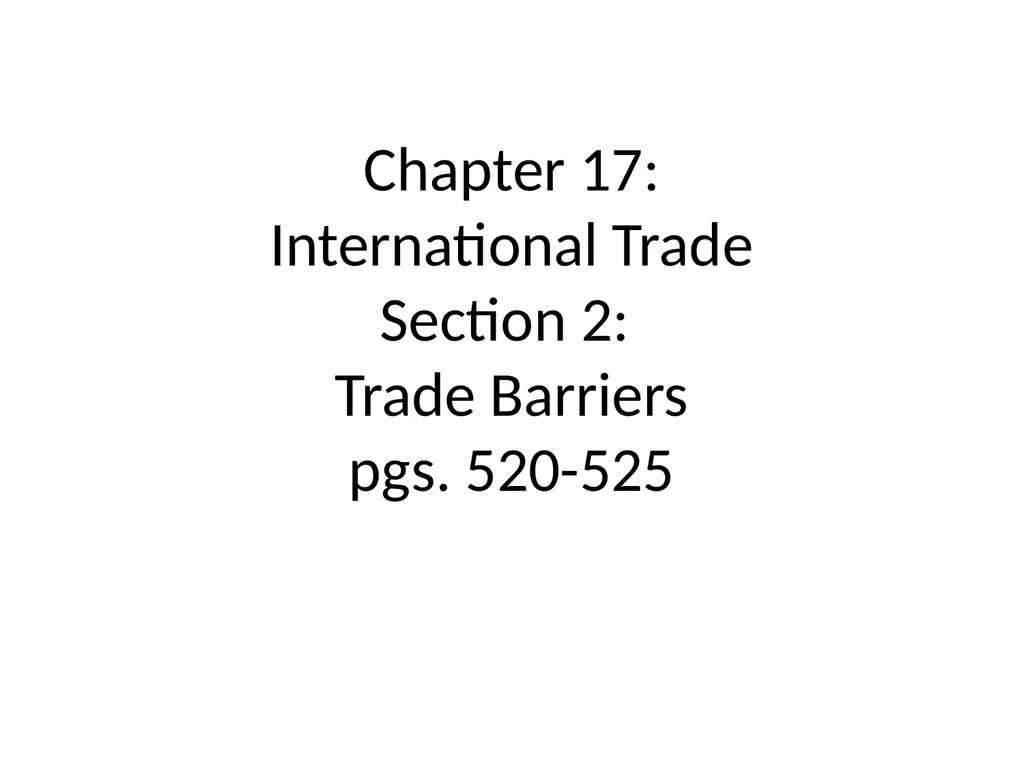
Chapter 17: International Trade Section 2: Trade
Author: olivia-moreira | Published: 2025-05-24
Description: Chapter 17: International Trade Section 2: Trade Barriers pgs. 520-525 Barriers to Trade In order to offer some short-term protection to jobs and industries located within their borders, almost all nations pass some sort of laws that limit
Download Presentation
Download the PPT/PDF: Download
Transcript:
Loading transcript…